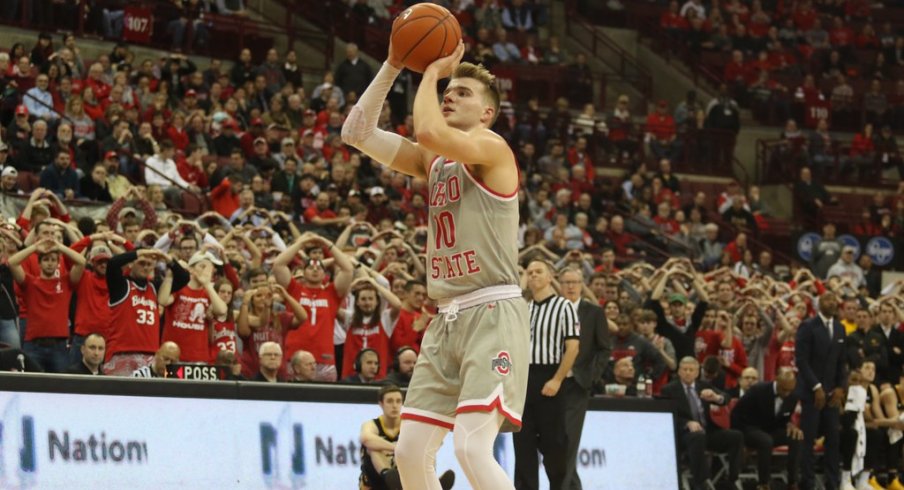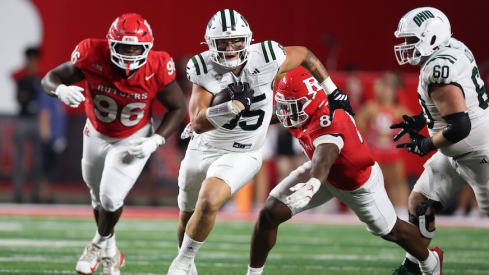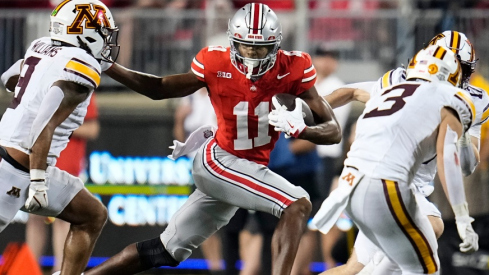You can't watch sports without hearing about it.
NBA games are not NBA games without Jeff Van Gundy's nightly rant against it. Cris Collinsworth's Sunday Night Football broadcast would not be the same without the little ranking under each player's introduction. Even baseball will never be the same, thanks to Brad Pitt, Jonah Hill and Michael Lewis.
It, of course, is analytics.
At this point, some people may stop reading. That's fine. While they're at it, they should watch some football games from the 1980s where the two teams combined for 40 passing yards and 17 points.
Analytics has become a bit of a buzzword; people either love it or they hate it. Either way, it is obvious that analytics have infiltrated American sports. One of the most widely discussed topics of analytics is the 3-point shot and the abandonment of the mid-range game.
The sensationalization of the 3-point shot has taken over the NBA, but college basketball has also been affected. The average Division I team in the 2008-2009 season took 589 3-pointers. Last season, that number rose to 741, a 31 percent increase over the last decade.
Ohio State was a little slower to conform to this trend. The 2008-2009 Buckeyes attempted 576 3-pointers, falling slightly short of the Division I average. In Thad Matta's final season, however, the Bucks shot just 592 times from beyond the arc, more than 100 shots below the 2016-2017 average.
Chris Holtmann's hiring, however, injected a new style of basketball into Columbus. By his second season, the Bucks were shooting an above average amount of 3s, attempting 774 triples last season. Even with the 3-point line being pushed back an additional 17 inches, expect Ohio State to continue shooting 3-pointers at an above average rate as they turn towards a more modern style.
If you pay any attention to sports, this may not be news to you. The mid-range debate has been raging for years with everyone from myself to LeBron James chiming in.
FACTS!! I just said that bro https://t.co/jjKTlpKqjy
— LeBron James (@KingJames) May 12, 2019
While it is entirely possible for a mid-range shot to be effective, especially for all-time great NBA players, a long two is, on average, a much worse shot than a 3-pointer.
This idea and the inefficiencies of the mid-range game can be clearly shown using data from The Stepien. The data suggests that Ohio State's coaching staff has made this realization about long twos versus 3-pointers and, consequently, adjusted their playing style and set plays.
The Stepien dataset includes information from almost all of the Buckeyes' games this season (excluding Northwestern), shows the location of each shot and puts them into zones. The resulting data table for each player looks like this:
| Location | FGM | FGA | FG% | Percent of FGA | Percent of FGM Assisted |
|---|---|---|---|---|---|
| Left Wing Three | 5 | 10 | 50% | 4.59% | 100% |
| Above the Break Three | 21 | 64 | 32.81% | 29.36% | 67% |
| Right Wing Three | 10 | 20 | 50% | 9.17% | 100% |
| Near the Rim | 22 | 46 | 47.83% | 21.10% | 4.55% |
| Short Mid-Range | 9 | 24 | 37.50% | 11.01% | 0.00% |
| Long Mid-Range | 16 | 54 | 29.63% | 24.77% | 50.00% |
| Total | 83 | 218 | 38.07% | 100% | 46.68% |
This table clearly illustrates a number of things: Muhammad took over 20 percent of his shots at the rim, the mid-range and from beyond the arc, showing his willingness to shoot at all three levels. He was typically unassisted on shots near the basket. And, despite his low percentage from the region, the rising sophomore favored the above the break 3-pointer.
Most importantly, however, it shows exactly why everyone is fawning over the 3-point shot; Muhammad shot 78 mid-range shots and made just 32 percent of those deep twos. When he takes a few steps back to get behind the arc, his percentage rises to 37.5 percent, the best on the team for those who played over 10 minutes per game.
The defense and situation should be considered, of course, but the point is clear: the mid-range shot is inefficient. The expected points scored from a Luther Muhammad mid-range shot last season was just 0.64 while the expected value of a 3-point attempt of his resulted in 1.15 points. Muhammad's 3-point attempts garnered him almost double the number of expected points as his mid-range attempts.
When looking at the entire 2018-2019 roster, this trend continues:
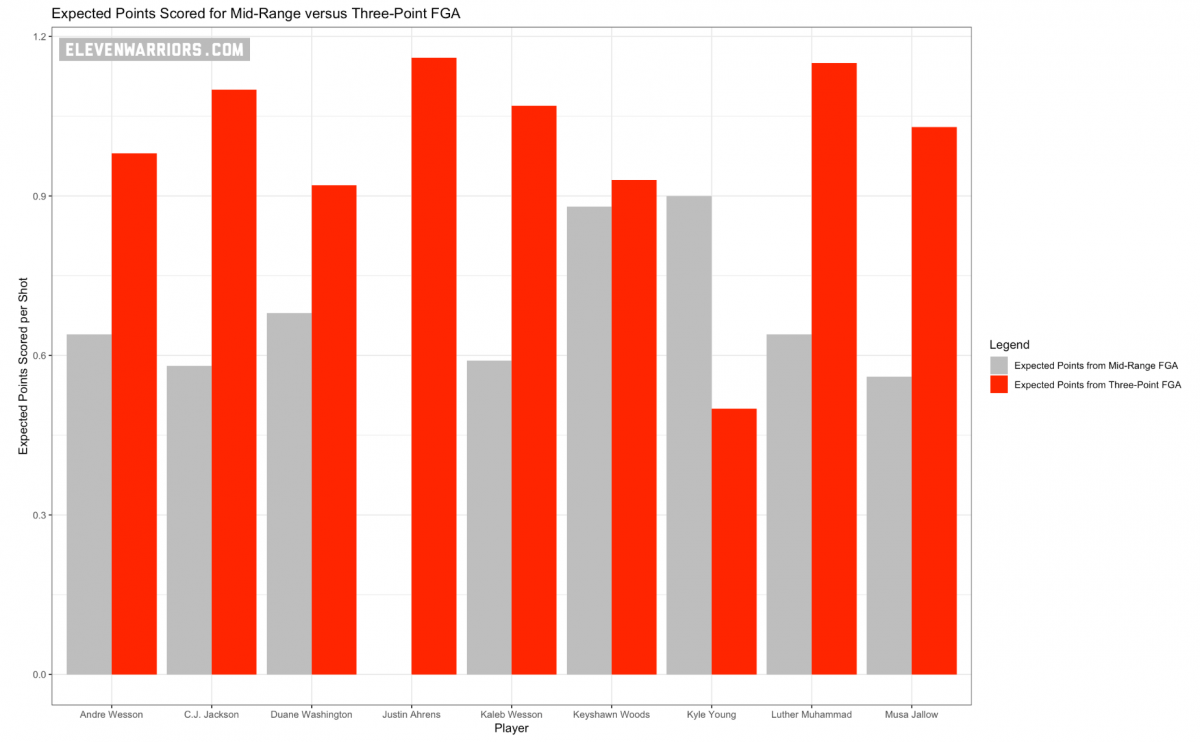
The vast majority of players on the roster had a higher expected value on 3-point attempts than on mid-range attempts. Only Kyle Young, who made one 3-pointer on six attempts and converted on 13 of his 29 mid-range shots, was more efficient from the mid-range than from the beyond the arc. Even Keyshawn Woods, who seemed to be living on 16-foot pull-ups in the postseason, was more efficient from beyond the arc.
This trend does not just exist for Ohio State. Almost all players in the NCAA and NBA have become more efficient from beyond the arc than just inside it, resulting in the "lost art of the mid-range game".
With Woods gone and Young facing a smaller role, it is safe to say that the mid-range shot will continue to fade under Chris Holtmann. In fact, the perfect embodiment of modern basketball (shots at the rim and beyond the arc) is already on the roster.
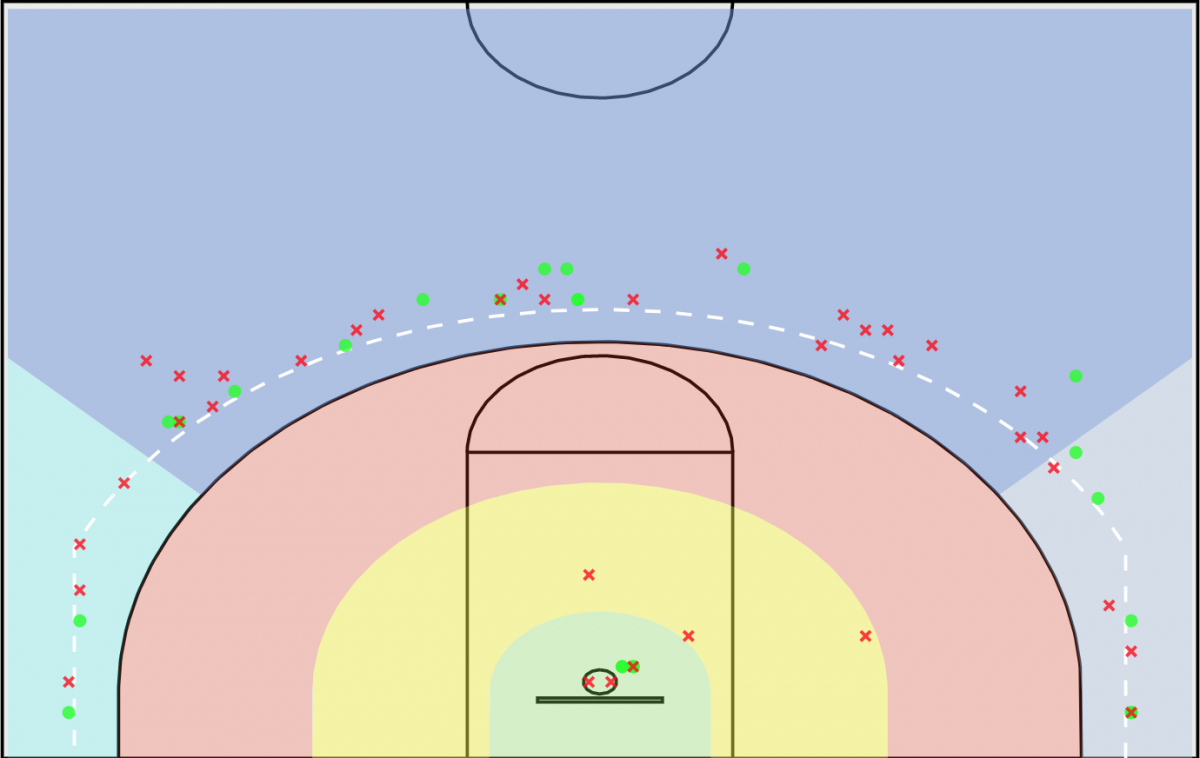
Justin Ahrens attempted just mid-range shots last season, opting for layups and 3-pointers for the rest of his attempts. With Ahrens battling for minutes next season, his efficiency and shot selection should be enough to keep him on the court.
Holtmann's system will continue to prioritize the 3-point shot, something that was increasingly obvious last season. This idea can be seen by comparing the percent of 3-pointers that were assisted on versus the percent of 2-pointers.
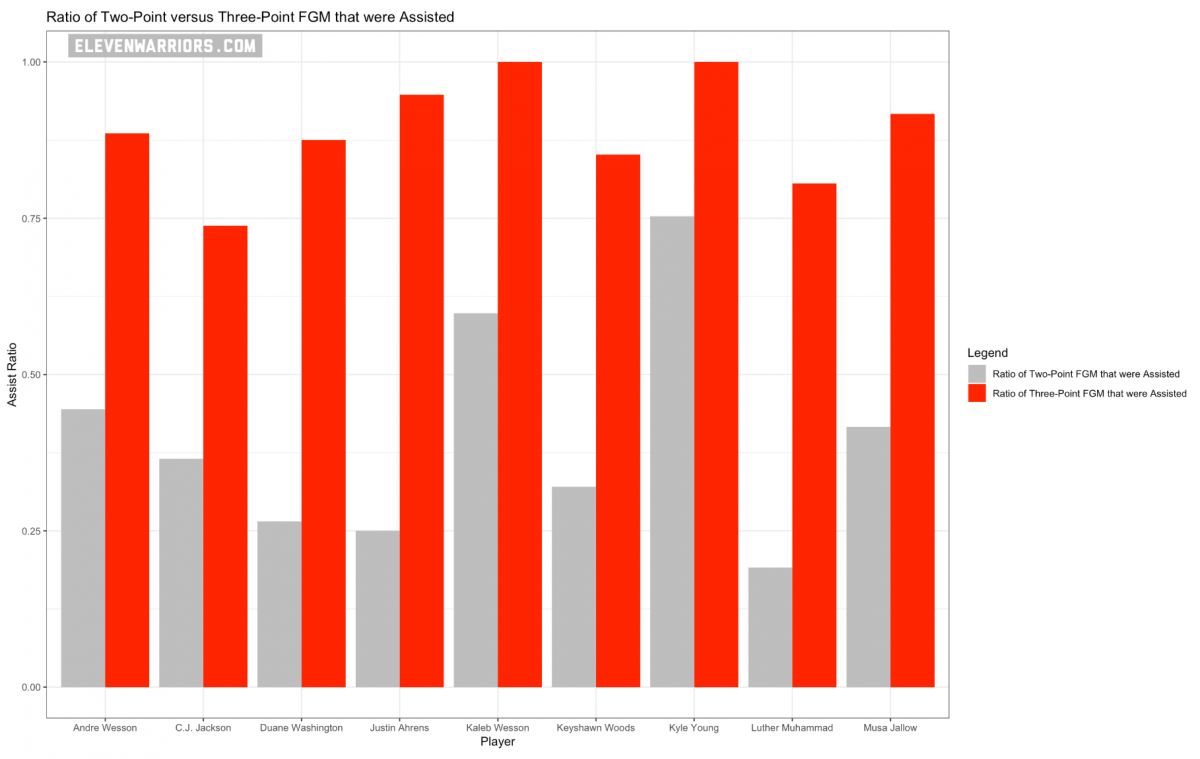
As a team, it is clear that 3-point shots are much more closely associated with assists than 2-point shots. The main reason likely lies in called plays; the coaching staff wants to become more three-centric, thus calling more plays for open shots from beyond the arc and encouraging an in-and-out game to set up good shooters. The two-point percentage may be low due to the lack of called plays inside the arc; isolations and pull-up jumpers were commonplace in Ohio State's offense last season and rarely resulted in high-percentage shots.
After a rollercoaster season last year, Chris Holtmann has regrouped his team with a talented recruiting class and a number of seasoned upperclassmen to take the program to the next level. While his improved roster will undoubtedly be the primary reason for the presumed success, Holtmann's offensive strategies and style of play should not be swept under the rug. His use of analytics and adjustments to the modern game of basketball has helped his teams overachieve in the past and will continue to bring success in the coming future.
